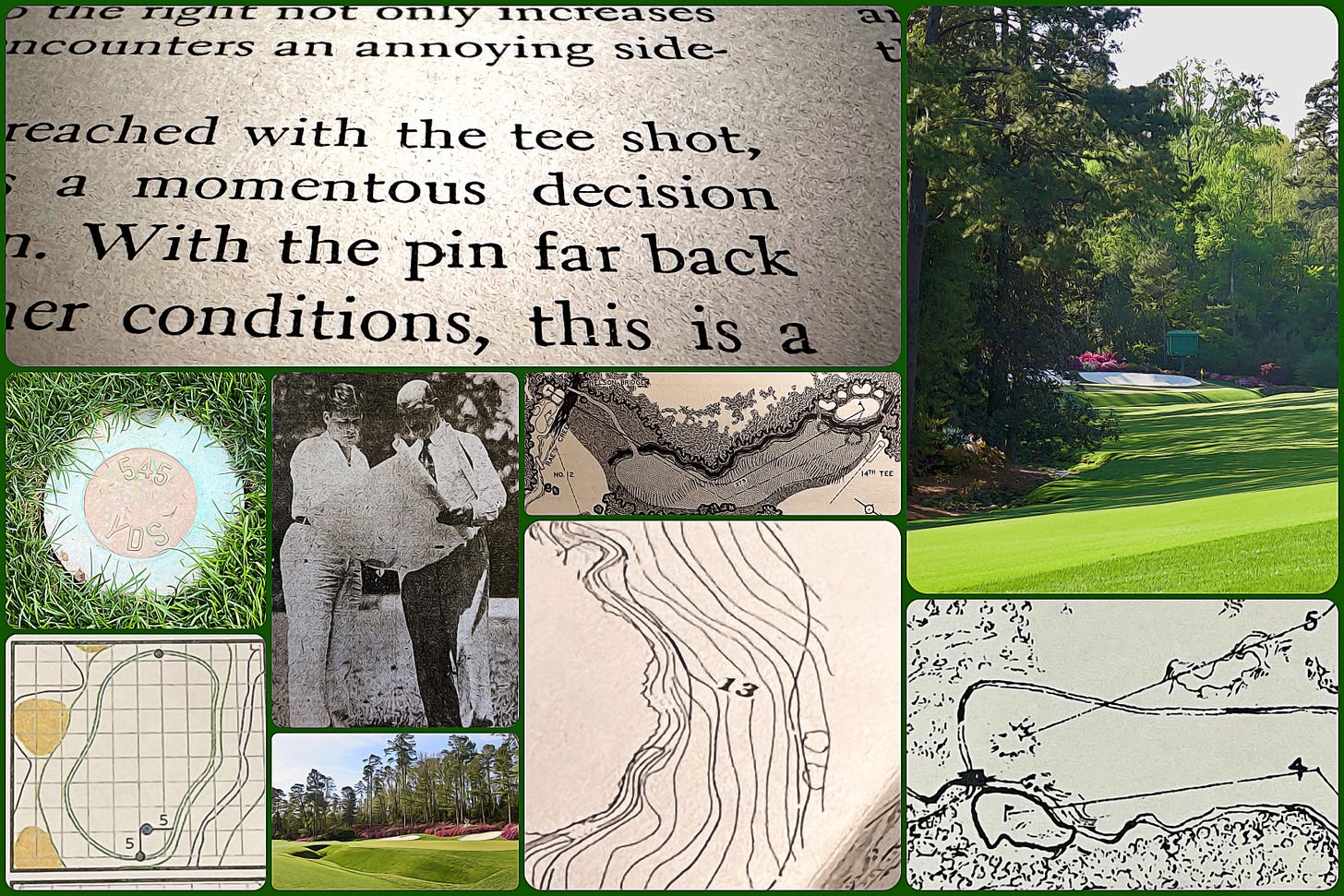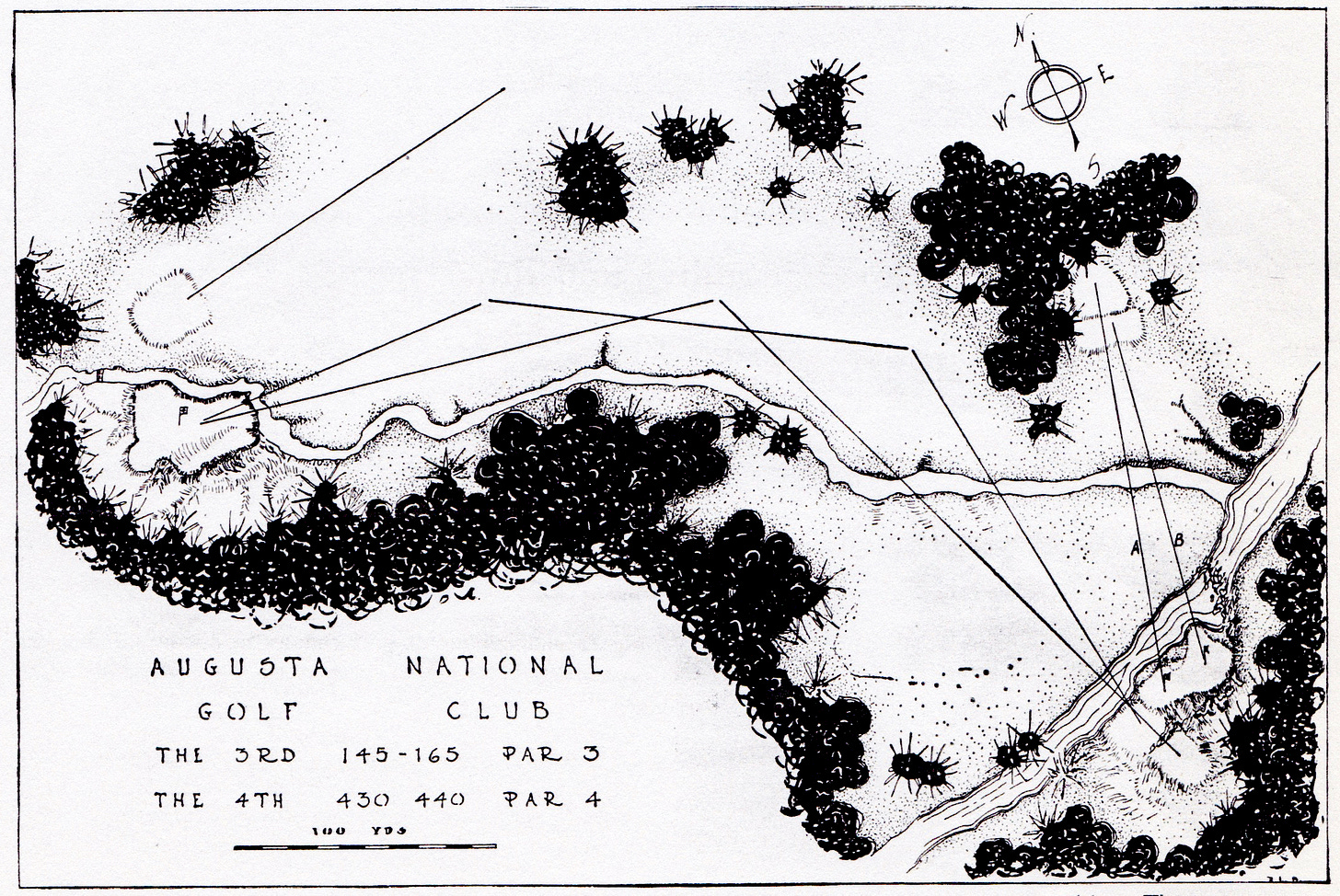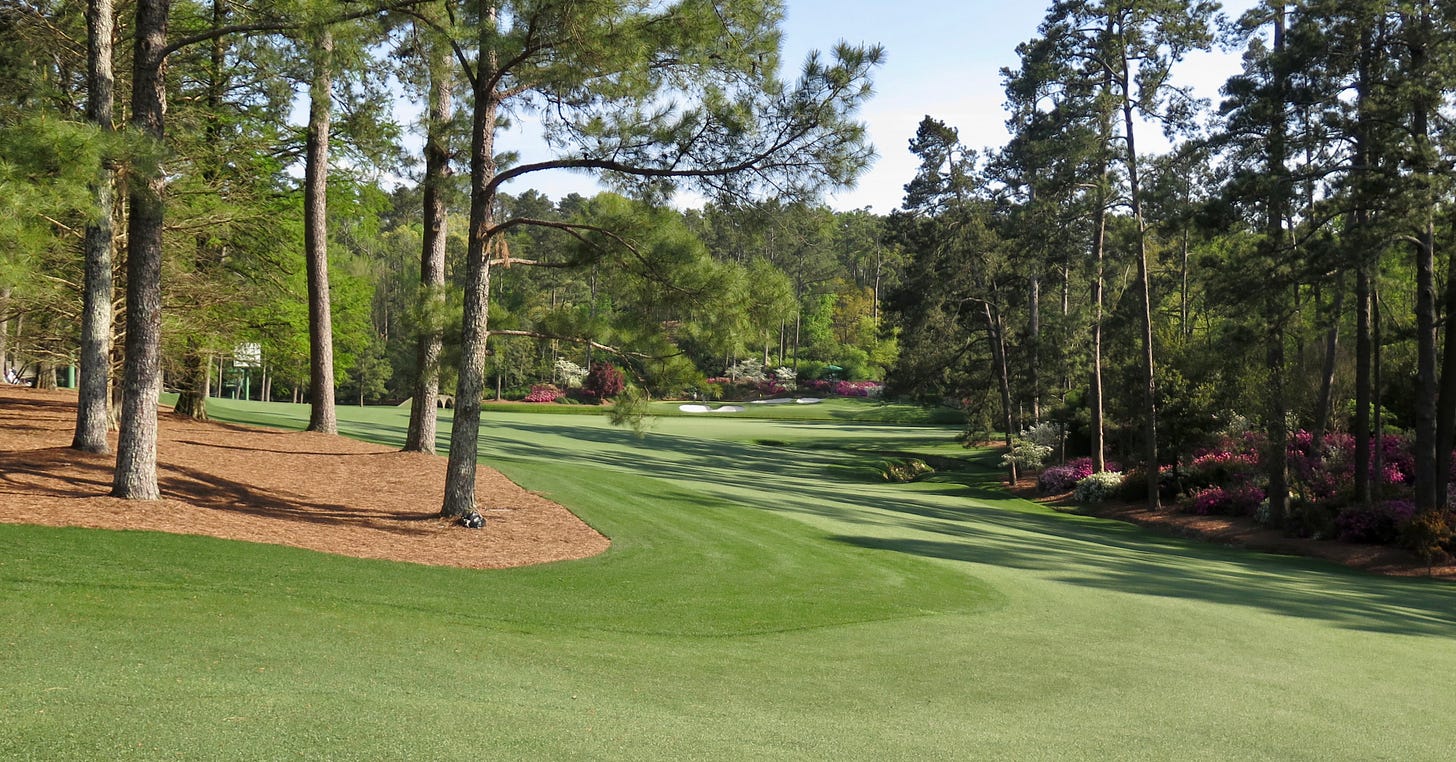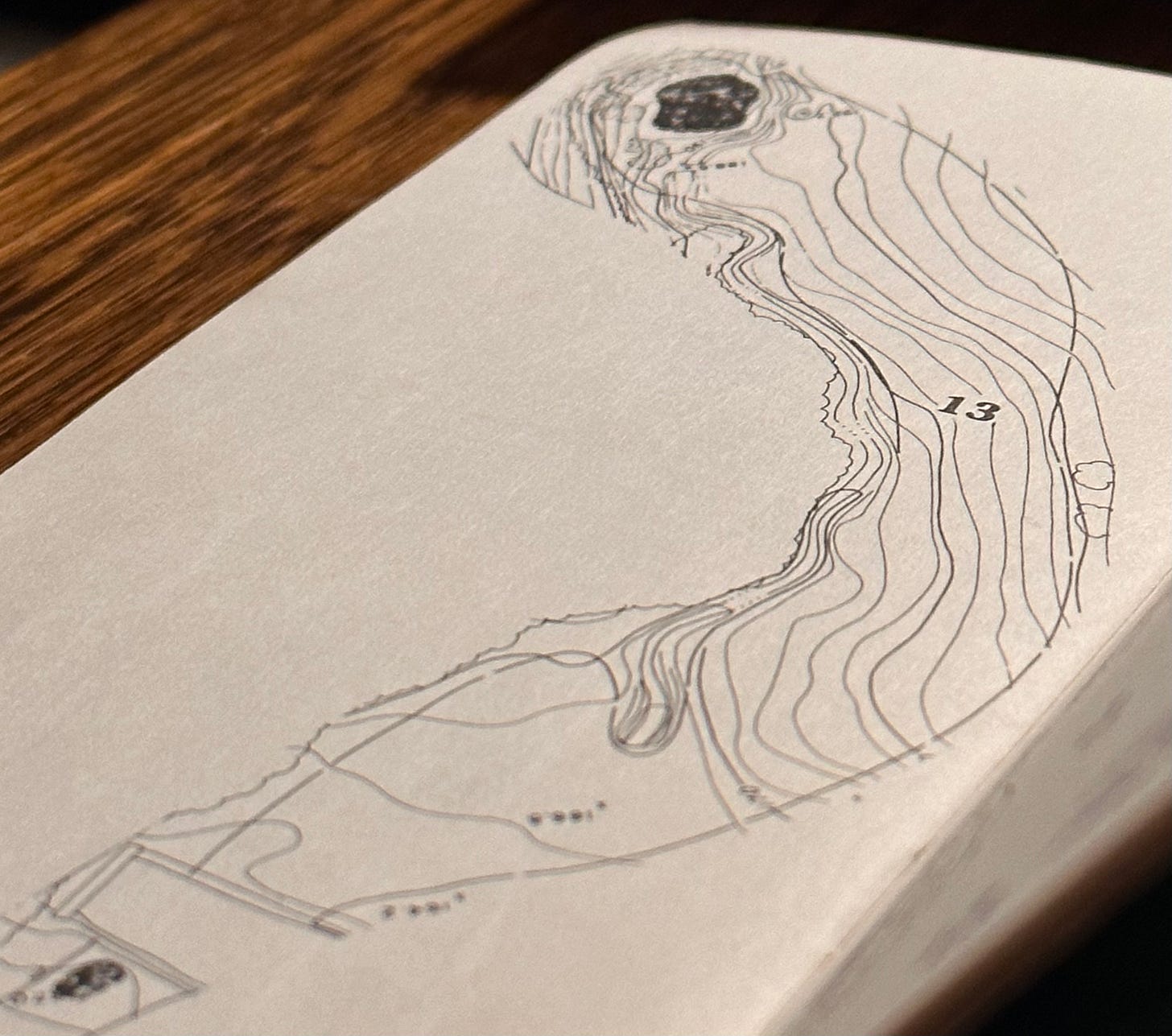Momentous Decision: What To Look For On Augusta National's Longer 13th
The most famous par 5 in golf has been lengthened at significant cost. Will it restore temptation and risk-taking? Experts weigh in as The Masters nears.
In my opinion this thirteenth hole is one of the finest holes for competitive play I have ever seen. The player is first tempted to dare the creek on his tee shot by playing close to the corner, because if he attains this position he has not only shortened the hole but obtained a more level lie for his second shot. Driving out to the right not only increases the length of the second, but encounters an annoying sidehill lie. The second shot as well entails a momentous decision whether or not to try for the green. A player who dares the creek on either his first or second shot may very easily encounter a six or seven on this hole. Yet reward of successful, bold play is most enticing. BOBBY JONES
Barring a live-streamed Champions Dinner food fight or Tiger Woods firing a first round 62, expect 13th hole intrigue to supersede all stories. And beware of tedious efforts to push a LIV v PGA Tour showdown as the white belt version of Ali-Frazier. They’re lurking.
The Lords of Augusta and their data crunchers pinpointed 545 yards as the ideal sweet spot to recapture 13’s status as the ultimate risk-taking stage. Though it’s no minor deal to toughen the most iconic hole on property. Just ask the 7th.
But 13 has been iconic since the first time Alister MacKenzie and Bobby Jones penciled in a sharp dogleg left where anyone could see a golf hole. And other than softening the fairway slopes enough for mowers and golf shots, they did little else to what was the original 4th hole. A year later it was the 13th.
Decades of epic shots later, the club discreetly applied Band-Aids over the years to keep the hole dangerous enough in the juiced equipment era:
A 2002 leap to 510 yards.
Trees planted to discourage bailing out right.
A few randomly leaning limbs (reportedly) near the tee.
Fairways mown longer and toward the tee to reduce roll.
Last summer the club installed the new tee on former Augusta Country Club land. Based on the land purchase price and elements installed under the tee as seen via Eureka Earth’s aerial images, we’re looking at $1 million per yard added to the hole.
As I wrote in a column for Links, the real pressure may be on the little known Cup and Tee Placement Committee to make the investment sing. The committee is tasked with getting players to a spot just far enough and flat enough to where the “momentous decision” awaits those wanting to go for the green.
With so much recent rain and little flexibility after the old 510-yard tee was eliminated, the 13th hole setup task may be tougher than most realize. Especially when there are already signs players may continue their recent point missing ways and fail to separate their needs from the big picture. We might even hear a few point missers suggest the sport has never been tougher to play. So don’t take away their chance to easily reach the green in two. Otherwise the game won’t grow!
But this is Augusta National. Players tend to keep their harshest takes to themselves or privately hurl them onto the official scorers after another 18th hole bogey.
The smart ones should love the longer 13th’s freedom to bash driver with less fear of hitting into the righthand pines. No one is likely to enjoy the longer second from a shocking sidehill stance into a green they had been approaching with 5, 6, 7 and even shorter irons in recent years.
The players aren’t supposed to love the shot. It’s meant to make them fret, pray, debate, calculate big picture ramifications, bicker with their caddie, question why they chose golf to make a living and, finally, to make a command decision under pressure.
Or they can always lay up.
In the grand scheme of life pressures, it’s not a big deal to lay up even though eagle 3’s or birdie 4’s become less likely.
“I think you’re going to see some guys really have to think hard about what that second shot entails,” says CBS on-course reporter Dottie Pepper, who also has good news for players based on watching the last two Masters from the ground.
“Over the last ten years or so as the golf ball has traveled farther, it has become one of those really difficult tee shots at Augusta National. Because so many players have lost the ball to the right through the dogleg or have had to take more risk down the lefthand side. So I’m anxious to see if there will in fact be more drives that find the fairway.”
Her CBS colleague Trevor Immelman is the 2008 Masters champion and new lead analyst this year. He endorsed Pepper’s view.
“You have about 300 yards to run through on a direct line now,” he said. “So it’s going to be putting the players right around the corner.”
In a pair of recent rounds there with his 16-year-old son and avid junior golfer, Immelman was forced to lay up one round due to overhanging pine limbs down the left. He then hit a longer drive in his second round and had 4-iron into the green.
“I foresee everything from a 5-wood to a 6-iron depending on the conditions,” he said.
Many may understandably seize on what clubs players use into the green despite the silly with modern iron lofts. Immelman will be looking at other less tangible offshoots and variables brought on by the added length.
“I would love if we could get to a point where more than 50% have a go at it. That makes it exciting to see these guys hit a long iron from a lie where the ball is well above their feet and we could see everything from a 3 to a 7 or an 8. I think it’s going to be an extremely exciting hole for us during the week.”
Immelman agreed that the tee shot may get easier, offset by the increased difficulty of shots going for the green in two.
“Over the last number of years the players have been more apprehensive about turning their ball over too quickly because they don’t want to end up in the creek,” Immelman says. “So we see a lot of players going through into the pine straw.”








